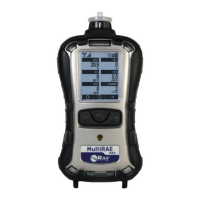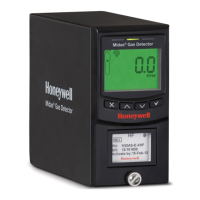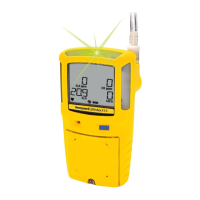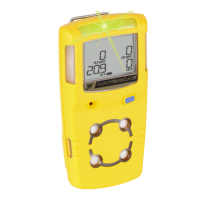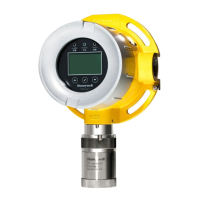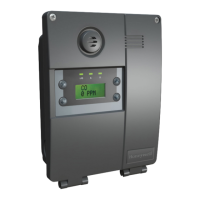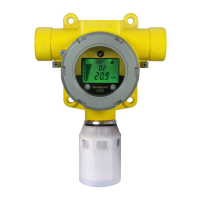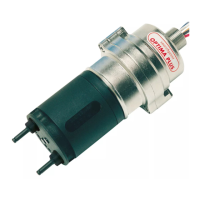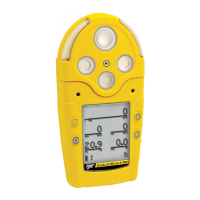It is recommended to use a 2-point calibration using high-range PID sensors. For more
information review TN-114
Note: There could be some cross-sensitivity that may persist due to the use of these gases.
Calibrating A PH
3
Sensor Using H
2
S Calibration Gas
Using a specially designed PH
3
(Phosphine) sensor in a MultiRAE with firmware version 1.50 or
higher, it is possible to calibrate the PH
3
H sensor using H
2
S (Hydrogen Sulfide) calibration
gas. This simplifies both multi- and single-sensor calibration because it allows calibrating both
sensors together, without requiring PH
3
calibration gas.
Note: Two PH
3
sensors are available, to be able to use H
2
S gas only P/N: C03-0976-100 can be
used, if you want to calibrate the PH
3
sensor you can either use H
2
S or the 4-mix gas
containing H
2
S.
If the MultiRAE reads the sensor and finds that it is designed for this H
2
S/PH
3
calibration,
when you view the Multi Cal. Select screen, it shows H
2
S and PH
3
selected. Then, if you press
[N/-] to see the values of the Span gas the MultiRAE expects. Make sure that the gas values on
a 4-mix calibration gas cylinder match the values shown, except for H
2
S, which should be 10
ppm (even though the display shows 16 ppm for PH
3
). To calibrate multiple sensors, including
the specialized PH
3
H sensor, follow the instructions on section 9.3.1.
If the MultiRAE reads the sensor and finds that it is not designed for H
2
S/PH
3
calibration,
when you view the Multi Cal. Select screen, PH
3
is not selected. When you press [N/-] to
advance to the values screen, PH
3
is not shown.
When performing a single-sensor calibration and the instrument is equipped with the
specialized PH
3
H sensor, the Span Calibration screen shows the target value of the calibration
gas and reminds you to apply gas using 10 ppm H
2
S. Follow the standard process outlined on
section 9.3.2
Honeywell MultiRAE Series™ 82 User Manual
